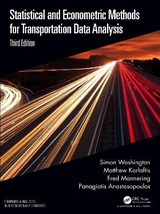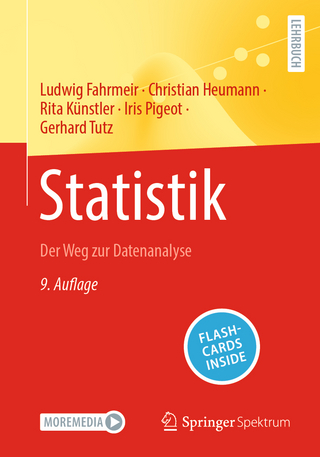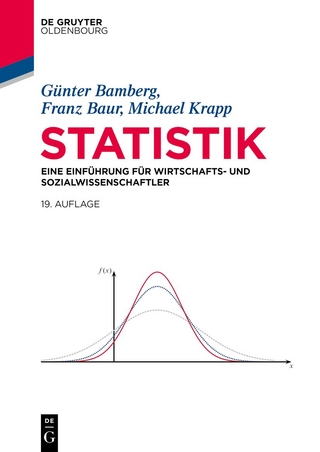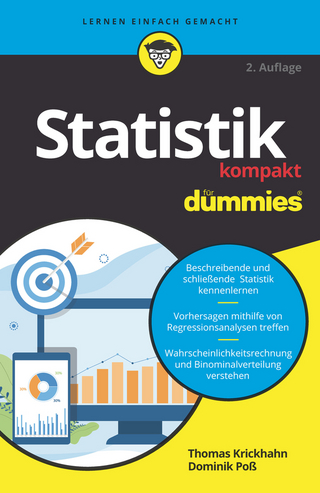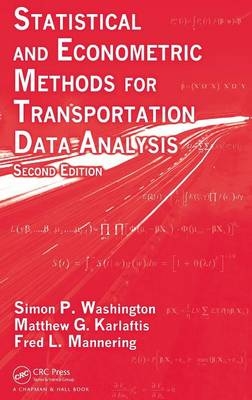
Statistical and Econometric Methods for Transportation Data Analysis
Chapman & Hall/CRC (Verlag)
978-1-4200-8285-2 (ISBN)
- Titel erscheint in neuer Auflage
- Artikel merken
The complexity, diversity, and random nature of transportation problems necessitates a broad analytical toolbox. Describing tools commonly used in the field, Statistical and Econometric Methods for Transportation Data Analysis, Second Edition provides an understanding of a broad range of analytical tools required to solve transportation problems. It includes a wide breadth of examples and case studies covering applications in various aspects of transportation planning, engineering, safety, and economics.
After a solid refresher on statistical fundamentals, the book focuses on continuous dependent variable models and count and discrete dependent variable models. Along with an entirely new section on other statistical methods, this edition offers a wealth of new material.
New to the Second Edition
A subsection on Tobit and censored regressions
An explicit treatment of frequency domain time series analysis, including Fourier and wavelets analysis methods
New chapter that presents logistic regression commonly used to model binary outcomes
New chapter on ordered probability models
New chapters on random-parameter models and Bayesian statistical modeling
New examples and data sets
Each chapter clearly presents fundamental concepts and principles and includes numerous references for those seeking additional technical details and applications. To reinforce a practical understanding of the modeling techniques, the data sets used in the text are offered on the book’s CRC Press web page. PowerPoint and Word presentations for each chapter are also available for download.
Simon P. Washington is the Queensland Transport and Main Roads chair and professor in the School of Urban Development, Faculty of Built Environment and Engineering, Center for Accident Research and Road Safety (CARRS-Q), Faculty of Health at Queensland University of Technology. Dr. Washington is an associate editor of the Journal of Transportation Engineering; area editor of the Journal of Transportation Safety and Security; and an editorial board member of Accident Analysis & Prevention, the Journal of Sustainable Transportation, and Transportation Research: Part A. His research interests include transport mobility safety and risk, travel behavior, urban and transport planning, and transport sustainability. Matthew G. Karlaftis is an associate professor in the School of Civil Engineering at the National Technical University of Athens. Dr. Karlaftis is European editor of the Journal of Transportation Engineering; an associate editor of the Journal of Infrastructure Systems; and an editorial board member of Transportation Research: Part C, IET Intelligent Transport Systems, Accident Analysis & Prevention, and Transportation Letters. His research areas include public transit operations, urban transportation, and infrastructure management. Fred L. Mannering is the Charles Pankow Professor of Civil Engineering at Purdue University, where he also holds a courtesy appointment in the Department of Economics. Dr. Mannering is the author of over 100 journal papers and is the editor-in-chief of Transportation Research: Part B. His research interests include the application of econometric and statistical methods to engineering problems, highway safety, transportation economics, automobile demand, and travel behavior.
FUNDAMENTALS
Statistical Inference I: Descriptive Statistics
Measures of Relative Standing
Measures of Central Tendency
Measures of Variability
Skewness and Kurtosis
Measures of Association
Properties of Estimators
Methods of Displaying Data
Statistical Inference II: Interval Estimation, Hypothesis Testing, and Population Comparisons
Confidence Intervals
Hypothesis Testing
Inferences Regarding a Single Population
Comparing Two Populations
Nonparametric Methods
CONTINUOUS DEPENDENT VARIABLE MODELS
Linear Regression
Assumptions of the Linear Regression Model
Regression Fundamentals
Manipulating Variables in Regression
Estimate a Single Beta Parameter
Estimate Beta Parameter for Ranges of a Variable
Estimate a Single Beta Parameter for m – 1 of the m Levels of a Variable
Checking Regression Assumptions
Regression Outliers
Regression Model GOF Measures
Multicollinearity in the Regression
Regression Model-Building Strategies
Estimating Elasticities
Censored Dependent Variables—Tobit Model
Box–Cox Regression
Violations of Regression Assumptions
Zero Mean of the Disturbances Assumption
Normality of the Disturbances Assumption
Uncorrelatedness of Regressors and Disturbances Assumption
Homoscedasticity of the Disturbances Assumption
No Serial Correlation in the Disturbances Assumption
Model Specification Errors
Simultaneous-Equation Models
Overview of the Simultaneous-Equations Problem
Reduced Form and the Identification Problem
Simultaneous-Equation Estimation
Seemingly Unrelated Equations
Applications of Simultaneous Equations to Transportation Data
Panel Data Analysis
Issues in Panel Data Analysis
One-Way Error Component Models
Two-Way Error Component Models
Variable-Parameter Models
Additional Topics and Extensions
Background and Exploration in Time Series
Exploring a Time Series
Basic Concepts: Stationarity and Dependence
Time Series in Regression
Forecasting in Time Series: Autoregressive Integrated Moving Average (ARIMA) Models and Extensions
Autoregressive Integrated Moving Average Models
The Box–Jenkins Approach
Autoregressive Integrated Moving Average Model Extensions
Multivariate Models
Nonlinear Models
Latent Variable Models
Principal Components Analysis
Factor Analysis
Structural Equation Modeling
Duration Models
Hazard-Based Duration Models
Characteristics of Duration Data
Nonparametric Models
Semiparametric Models
Fully Parametric Models
Comparisons of Nonparametric, Semiparametric, and Fully Parametric Models
Heterogeneity
State Dependence
Time-Varying Covariates
Discrete-Time Hazard Models
Competing Risk Models
COUNT AND DISCRETE DEPENDENT VARIABLE MODELS
Count Data Models
Poisson Regression Model
Interpretation of Variables in the Poisson Regression Model
Poisson Regression Model Goodness-of-Fit Measures
Truncated Poisson Regression Model
Negative Binomial Regression Model
Zero-Inflated Poisson and Negative Binomial Regression Models
Random-Effects Count Models
Logistic Regression
Principles of Logistic Regression
The Logistic Regression Model
Discrete Outcome Models
Models of Discrete Data
Binary and Multinomial Probit Models
Multinomial Logit Model
Discrete Data and Utility Theory
Properties and Estimation of MNL Models
The Nested Logit Model (Generalized Extreme Value Models)
Special Properties of Logit Models
Ordered Probability Models
Models for Ordered Discrete Data
Ordered Probability Models with Random Effects
Limitations of Ordered Probability Models
Discrete/Continuous Models
Overview of the Discrete/Continuous Modeling Problem
Econometric Corrections: Instrumental Variables and Expected Value Method
Econometric Corrections: Selectivity-Bias Correction Term
Discrete/Continuous Model Structures
Transportation Application of Discrete/Continuous Model Structures
OTHER STATISTICAL METHODS
Random-Parameter Models
Random-Parameters Multinomial Logit Model (Mixed Logit Model)
Random-Parameter Count Models
Random-Parameter Duration Models
Bayesian Models
Bayes’ Theorem
MCMC Sampling-Based Estimation
Flexibility of Bayesian Statistical Models via MCMC Sampling-Based Estimation
Convergence and Identifi ability Issues with MCMC Bayesian Models
Goodness-of-Fit, Sensitivity Analysis, and Model Selection Criterion using MCMC Bayesian Models
Appendix A: Statistical Fundamentals
Appendix B: Glossary of Terms
Appendix C: Statistical Tables
Appendix D: Variable Transformations
References
Index
| Erscheint lt. Verlag | 2.12.2010 |
|---|---|
| Reihe/Serie | Chapman & Hall/CRC Interdisciplinary Statistics |
| Zusatzinfo | over 400 equations; 96 Tables, black and white; 90 Illustrations, black and white |
| Sprache | englisch |
| Maße | 156 x 234 mm |
| Gewicht | 876 g |
| Themenwelt | Mathematik / Informatik ► Mathematik ► Statistik |
| Technik | |
| Wirtschaft ► Volkswirtschaftslehre ► Ökonometrie | |
| ISBN-10 | 1-4200-8285-X / 142008285X |
| ISBN-13 | 978-1-4200-8285-2 / 9781420082852 |
| Zustand | Neuware |
| Informationen gemäß Produktsicherheitsverordnung (GPSR) | |
| Haben Sie eine Frage zum Produkt? |
aus dem Bereich
